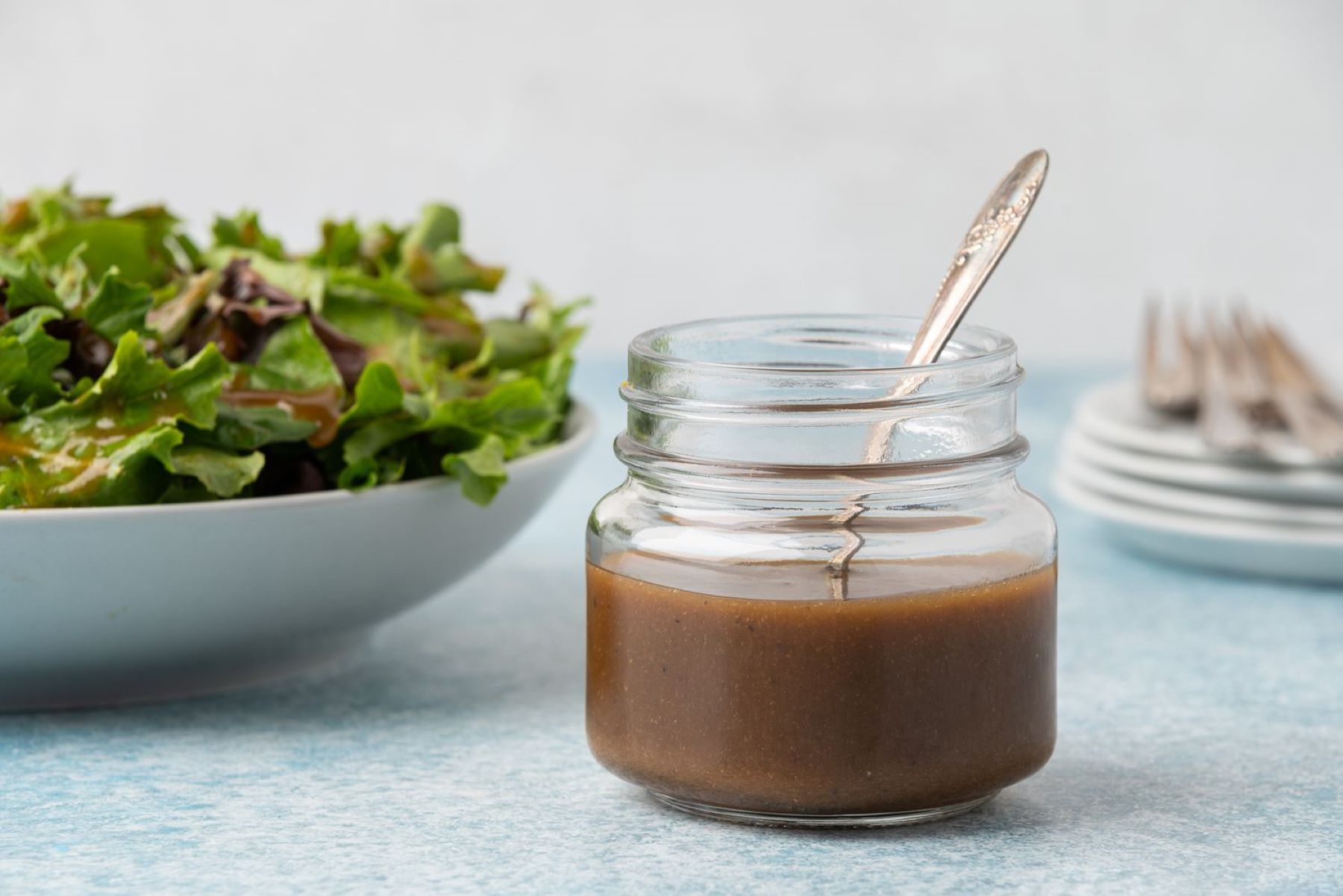
When it comes to dressing up your salads and adding a burst of flavor, balsamic vinaigrette is a popular choice. Not only does it bring a tangy and slightly sweet taste to your dish, but it also provides a range of health benefits. In this article, we’ll dive into the nutrition facts of balsamic vinaigrette, revealing why it’s a smart choice for both your taste buds and your well-being. From its low calorie count to its heart-healthy properties, balsamic vinaigrette is a versatile dressing that can elevate any meal. So, let’s explore the nutritional profile of this delicious dressing and discover why it deserves a spot in your pantry.
Key Takeaways:
- Balsamic Vinaigrette is a low-calorie, low-fat dressing with minimal sugar and carbs, making it a healthier choice for salads and other dishes. Just watch out for the sodium content!
- Making your own Balsamic Vinaigrette ensures a healthier and more customizable dressing, while store-bought options may contain added sugars and preservatives. Get creative in the kitchen!
Calories
Balsamic Vinaigrette contains approximately 43 calories per tablespoon serving. This makes it a low-calorie dressing option for those watching their daily intake.
Fat Content
Balsamic Vinaigrette is a low-fat dressing, with only about 3.7 grams of fat per tablespoon. This makes it a healthier choice compared to some other creamy dressings.
Carbohydrates
Balsamic Vinaigrette contains around 3 grams of carbohydrates per tablespoon. This makes it a suitable option for individuals following a low-carb or ketogenic diet.
Protein
While Balsamic Vinaigrette is not a significant source of protein, it still contains approximately 0.2 grams of protein per tablespoon. Protein is essential for muscle growth and repair.
Sugar Content
Balsamic Vinaigrette is relatively low in sugar, with only around 2 grams of sugar per tablespoon. This makes it a healthier alternative to many commercially prepared dressings.
Sodium
Balsamic Vinaigrette tends to be higher in sodium compared to other dressings, with approximately 221 milligrams per tablespoon. Individuals on a low-sodium diet should consume it in moderation.
Vitamin Content
Balsamic Vinaigrette contains trace amounts of vitamins, such as Vitamin A and Vitamin C. However, the levels are not significant enough to contribute significantly to your daily requirements.
Mineral Content
Balsamic Vinaigrette contains small amounts of minerals like iron, calcium, and potassium. These minerals play essential roles in maintaining proper bodily functions.
Antioxidant Properties
Balsamic Vinegar, one of the main ingredients in Balsamic Vinaigrette, is known for its antioxidant properties. Antioxidants help protect your cells from damage caused by free radicals.
Versatile Flavor
One of the reasons Balsamic Vinaigrette is popular is its versatile flavor. It adds tanginess and a touch of sweetness to salads, roasted vegetables, and even grilled meats.
Homemade vs. Store-Bought
Making your own Balsamic Vinaigrette allows you to control the ingredients, ensuring a healthier and more customized dressing. Store-bought options may contain added sugars and preservatives.
Conclusion
In conclusion, balsamic vinaigrette is not only a flavorful addition to your meals, but it also offers a range of health benefits. With its low calorie and fat content, it is a suitable option for those watching their weight or following a healthy eating plan. Balsamic vinaigrette is packed with antioxidants that can help protect against cell damage and reduce the risk of chronic diseases. Its ingredients, such as olive oil and vinegar, provide heart-healthy monounsaturated fats and acetic acid, which may aid in digestion and blood sugar management. Additionally, balsamic vinaigrette offers a burst of flavor that can enhance the taste of salads, vegetables, and even meat dishes. So, next time you’re looking to dress up your favorite foods, consider reaching for a bottle of balsamic vinaigrette.
FAQs
1. How many calories are in balsamic vinaigrette?
Balsamic vinaigrette typically contains around 30-40 calories per tablespoon. However, the calorie content may vary slightly depending on the brand and specific ingredients used.
2. Is balsamic vinaigrette high in fat?
No, balsamic vinaigrette is not high in fat. It is usually made with olive oil, which is a healthy source of monounsaturated fats. A tablespoon of balsamic vinaigrette typically contains around 2-3 grams of fat.
3. Can I use balsamic vinaigrette if I’m on a low-carb diet?
Yes, balsamic vinaigrette can be a great option for those on a low-carb diet. While it does contain carbohydrates, they are usually in small amounts and can fit into a low-carb eating plan when consumed in moderation.
4. Does balsamic vinaigrette contain added sugars?
Some store-bought versions of balsamic vinaigrette may contain added sugars. However, you can also find options with little to no added sugars. It’s always a good idea to check the nutrition label before purchasing.
5. Can I make my own balsamic vinaigrette at home?
Absolutely! Making your own balsamic vinaigrette at home is easy and allows you to control the ingredients. You can combine balsamic vinegar, olive oil, Dijon mustard, garlic, and various herbs and spices to create a delicious dressing.
Was this page helpful?
Our commitment to delivering trustworthy and engaging content is at the heart of what we do. Each fact on our site is contributed by real users like you, bringing a wealth of diverse insights and information. To ensure the highest standards of accuracy and reliability, our dedicated editors meticulously review each submission. This process guarantees that the facts we share are not only fascinating but also credible. Trust in our commitment to quality and authenticity as you explore and learn with us.
